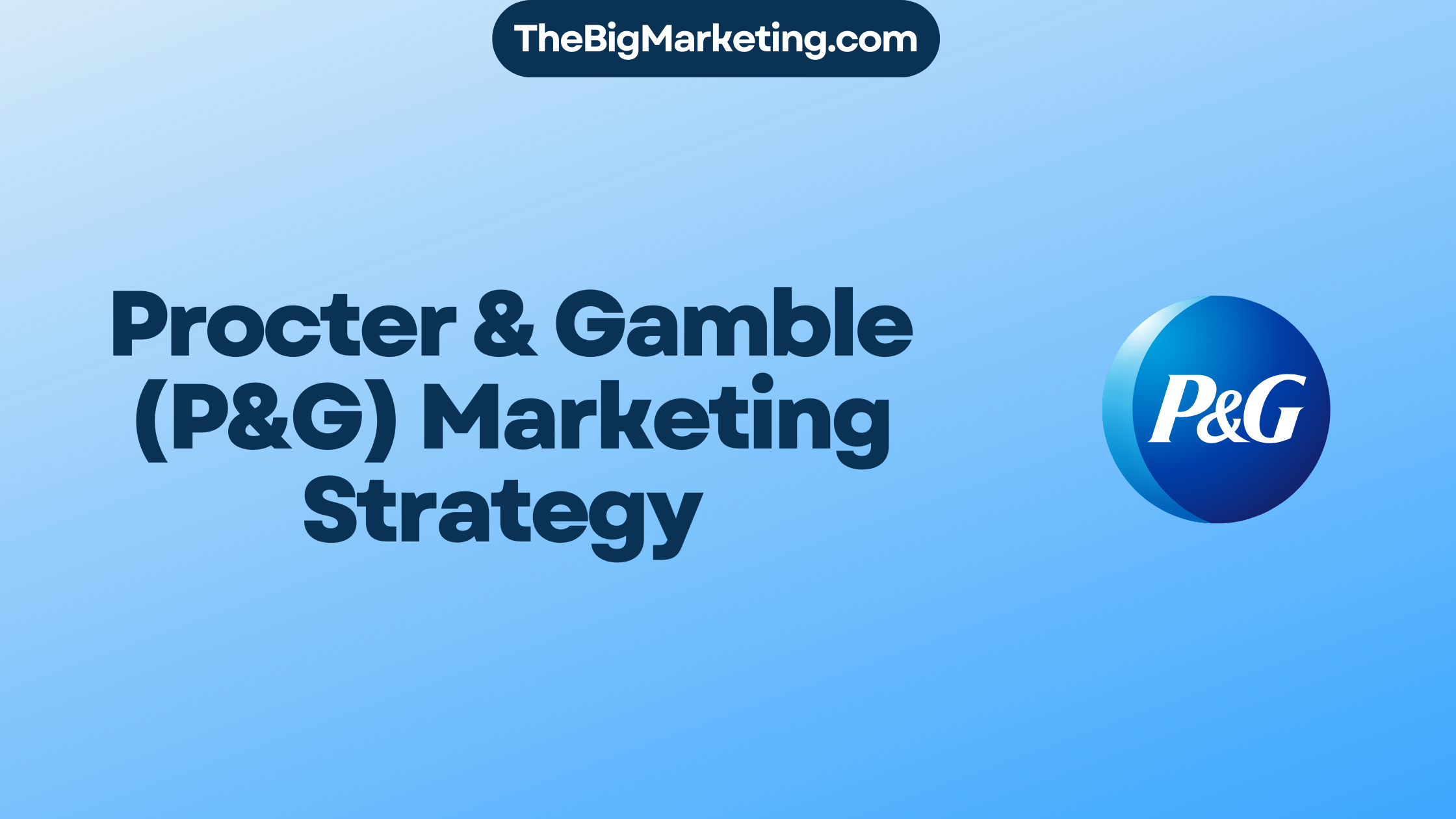Shopper Marketing and Trade Marketing are two distinct approaches in the field of marketing. While many people may confuse the two, they have different focuses and objectives. Shopper Marketing revolves around enhancing the shopping experience for end consumers, aiming to increase sales and build stronger customer relationships. Trade Marketing, on the other hand, focuses on building relationships with wholesalers, distributors, and retailers to increase demand in the supply chain. Understanding the nuances between these two strategies is crucial for effective marketing efforts.
Key Takeaways:
- Shopper Marketing focuses on enhancing the shopping experience for consumers.
- Trade Marketing focuses on building relationships with wholesalers and retailers.
- Shopper Marketing aims to increase sales and build stronger customer relationships.
- Trade Marketing aims to increase demand in the supply chain.
- Understanding the differences between Shopper Marketing and Trade Marketing is crucial for effective marketing strategies.
Shopper Marketing Strategies
Shopper Marketing strategies encompass a wide range of tactics and techniques aimed at enhancing the shopping experience, both in-store and online. These strategies focus on optimizing various aspects of the customer journey to drive sales, strengthen retail relationships, and raise brand awareness.
One key aspect of Shopper Marketing strategies is optimizing store layouts to create an appealing and efficient shopping environment. By strategically placing products, signage, and displays, retailers can guide shoppers through the store and increase the likelihood of impulse purchases.
The Benefits of Shopper Marketing Strategies
- Improve in-store and online shopping experiences
- Drive sales and increase customer loyalty
- Build stronger retail relationships
- Raise brand awareness and visibility
Another effective technique is simplifying the e-commerce checkout process. By streamlining the steps required to complete a purchase online, brands can reduce cart abandonment rates and provide a seamless digital shopping experience.
Personalized marketing campaigns are also an integral part of Shopper Marketing strategies. By leveraging customer data and segmentation, brands can deliver targeted promotions and recommendations that resonate with shoppers, driving engagement and increasing conversions.
Trends in Shopper Marketing
As consumer behavior and technology continue to evolve, there are several notable trends in Shopper Marketing to watch for:
- Receipt Validation: Brands are utilizing receipt validation programs to incentivize repeat purchases and collect valuable customer data. By encouraging shoppers to submit receipts for rewards or discounts, brands can gather insights into purchase patterns and shopping habits.
- Scent Marketing: Harnessing the power of scent to evoke emotions and influence purchasing decisions is an emerging trend in Shopper Marketing. Retailers are using carefully selected fragrances to create immersive and memorable shopping experiences, increasing customer engagement and brand recall.
- Social Media Engagement: With the widespread use of social media platforms, brands are leveraging these channels to connect with shoppers, share content, and gather feedback. Social media engagement allows for direct interaction, fostering brand loyalty and building authentic relationships with customers.
These trends underscore the importance of staying up to date with the latest developments in the field of Shopper Marketing. By embracing innovative strategies and leveraging emerging technologies, brands can create exceptional shopping experiences, drive sales, and ultimately thrive in the competitive marketplace.
| Shopper Marketing Strategies | Benefits | Trends |
|---|---|---|
| Optimizing store layouts | Improve in-store and online shopping experiences | Receipt validation |
| Simplifying e-commerce checkout process | Drive sales and increase customer loyalty | Scent marketing |
| Creating personalized marketing campaigns | Build stronger retail relationships | Social media engagement |
Trade Marketing Tactics
Trade Marketing tactics play a crucial role in building strong relationships with wholesalers, distributors, and retailers. The objective is to increase demand in the supply chain and drive sell-through by influencing customer behavior through joint promotions and support. Effective Trade Marketing tactics involve implementing various strategies such as:
- Implementing promotions: Trade Marketing utilizes promotions to attract customers and boost sales. These promotions can include discounts, limited-time offers, and bundled deals.
- Negotiating trade deals: Trade Marketing professionals engage in negotiations with retailers and distributors to secure favorable terms and conditions. These negotiations can involve pricing, product placement, and marketing support.
- Providing point-of-sale materials: Trade Marketing leverages point-of-sale materials to grab the attention of shoppers and encourage them to make a purchase. These materials can include in-store displays, signage, and product demonstrations.
By employing the right Trade Marketing tactics, brands can strengthen their position in the supply chain and increase product visibility and availability. Implementing effective strategies not only benefits brands but also provides value to wholesalers, distributors, and retailers.
Trade Marketing Case Studies
Real-world case studies offer valuable insights into the effectiveness of Trade Marketing strategies. Let’s take a look at a couple of examples:
| Case Study | Industry | Results |
|---|---|---|
| Case Study 1 | Fashion | 50% increase in sell-through, improved brand visibility, and strengthened retailer relationships |
| Case Study 2 | Consumer Electronics | 30% increase in market share, successful product launch, and enhanced promotional activities |
These case studies highlight the positive impact of Trade Marketing tactics in driving sales, improving brand visibility, and fostering stronger relationships with retailers. By analyzing and learning from these success stories, brands can refine their Trade Marketing strategies and achieve similar results.
Trade Marketing Statistics
Statistics provide valuable insights into the effectiveness of Trade Marketing tactics. Let’s take a look at some key statistics:
- Trade Marketing promotions can drive a 10-20% increase in sales volume (Source: Trade Marketing Association).
- 82% of retailers reported that Trade Marketing initiatives improved their relationship with manufacturers (Source: Nielsen).
- Trade Marketing campaigns that included in-store displays saw an average sales increase of 15% (Source: Point of Purchase Advertising International).
These statistics demonstrate the impact and potential of Trade Marketing tactics in driving sales, strengthening relationships, and increasing brand visibility. By leveraging these statistics, brands can make informed decisions and optimize their Trade Marketing strategies for maximum returns.
Role of Brand Marketing
Brand Marketing plays a crucial role in building memorable brands that consumers want to engage with. It adds value to companies, establishes brand identities, and fosters brand-retailer relationships. Effective brand marketing strategies involve long-term planning and utilize multiple platforms, channels, and devices to reach target audiences. By collaborating with retailers and providing comprehensive support, brands can enhance their reputation, raise brand awareness, and gain in-store visibility.
One of the key aspects of brand marketing is creating a strong brand identity. This includes developing a unique brand story, values, personality, and visual elements such as logos and packaging. A consistent and recognizable brand identity helps consumers differentiate a brand from its competitors and fosters trust and loyalty.
Brand marketing also involves crafting compelling brand messaging and communication strategies. This includes designing engaging marketing campaigns, advertisements, and content that align with the brand’s values and resonate with the target audience. Brands must carefully choose the right tone, language, and visuals to communicate their message effectively.
Collaboration with retailers is essential for successful brand marketing. Brands work closely with retailers to ensure their products are positioned prominently in stores and online. This may involve creating eye-catching displays, providing attractive packaging, and offering incentives to retailers to feature the brand’s products prominently. By working in partnership with retailers, brands can increase their in-store visibility and drive customer engagement.
Furthermore, brand marketing strategies encompass a range of tactics and initiatives to build brand loyalty and create memorable customer experiences. Brands may invest in loyalty programs, experiential marketing events, sponsorships, and partnerships to connect with customers on a deeper level and foster long-term relationships.
The Importance of Shopper Marketing in the Digital Age
In today’s dynamic, omnichannel environment, Shopper Marketing has become even more critical. With the rise of social media, mobile apps, and personalized email messages, engaging with customers has become easier than ever. However, the increased competition and changing consumer behavior pose challenges for brands and retailers.
Shopper Marketing helps bridge the gap by providing a strategic framework to convert customer data into actionable insights. It allows brands to optimize shelf layouts, position in-store displays effectively, design resonating product packaging, and capitalize on emerging trends. Embracing omnichannel approaches ensures consistent shopping experiences across different touchpoints.
With the right Shopper Marketing strategies in place, brands can effectively navigate the digital age and drive customer engagement, loyalty, and sales. By utilizing data-driven insights, brands can tailor their marketing efforts to meet the evolving demands and preferences of their target audience. This enables them to provide personalized experiences that resonate with shoppers, both online and in-store.
The interconnectedness of digital channels offers opportunities for brands to reach shoppers at various touchpoints along the customer journey. Through omnichannel shopper marketing, brands can ensure a seamless shopping experience regardless of whether customers are browsing products online, researching on their mobile devices, or visiting physical stores.
Moreover, Shopper Marketing in the digital age allows brands to measure and analyze the effectiveness of their marketing campaigns in real-time. By leveraging data analytics and insights, brands can refine and optimize their strategies to continuously improve their approach and drive better results.
Overall, Shopper Marketing in the digital age empowers brands to build meaningful connections with their target audience, drive sales, and stay ahead in competitive markets. By understanding the importance of embracing digital channels and utilizing data-driven insights, brands can create impactful shopper marketing strategies that deliver measurable business outcomes.
The Role of Shopper Marketing in E-commerce
The popularity of e-commerce has soared in recent years, with a significant boost during the pandemic. This shift in consumer behavior has presented both new opportunities and challenges for brands. To succeed in the competitive online marketplace, businesses have turned to e-commerce shopper marketing.
E-commerce shopper marketing focuses on raising brand awareness, driving traffic to online stores, and ultimately converting first-time visitors into long-term customers. Brands employ a wide range of tools and tactics, including search engine optimization (SEO), social media, email marketing, user-generated content, pay-per-click advertising, and retail media networks, to reach and engage their online audience.
One essential aspect of e-commerce shopper marketing is optimizing the online shopping experience. Brands work on creating seamless user interfaces, streamlined checkout processes, and personalized product recommendations to enhance the overall shopping journey. By leveraging data analytics, brands gain insights into customer behavior and preferences, allowing them to tailor their strategies for maximum impact.
Furthermore, e-commerce shopper marketing enables brands to make use of targeted advertising. By identifying their target audience and employing precise ad targeting strategies, brands can effectively reach potential customers who are most likely to engage with their products and convert into sales. This highly targeted approach helps optimize marketing spend, ensuring a better return on investment (ROI).
Benefits of E-commerce Shopper Marketing
E-commerce shopper marketing offers several key benefits for brands:
- Increased brand awareness: By actively promoting their brand through multiple online channels, brands can enhance their visibility, reach a larger audience, and generate brand recognition.
- Driving online traffic: Through targeted marketing campaigns, brands can attract more visitors to their online stores, increasing the chances of conversion and sales.
- Improved customer engagement: E-commerce shopper marketing allows brands to interact with customers through personalized communication, fostering deeper connections and building brand loyalty.
- Optimized online shopping experience: By leveraging technology and data-driven insights, brands can create a seamless and user-friendly online shopping experience, maximizing customer satisfaction and conversion rates.
| Key Tactics for E-commerce Shopper Marketing | Benefits |
|---|---|
| Search Engine Optimization (SEO) | Improves online visibility and organic traffic |
| Social Media Marketing | Builds brand loyalty, drives engagement, and increases reach |
| Email Marketing | Nurtures customer relationships and drives repeat purchases |
| User-Generated Content | Enhances social proof and credibility |
| Pay-Per-Click Advertising | Targets specific audiences and drives immediate traffic |
| Retail Media Networks | Offers additional advertising opportunities through online retailers |
Power of Personalization in Shopper Marketing
Personalization is a powerful tool in shopper marketing that can significantly impact customer engagement and loyalty. By leveraging marketing technology, brands can gain accurate insights into consumer behavior, preferences, and purchasing decisions. This deep understanding allows brands to deliver targeted campaigns and experiences that resonate with their audience, leading to increased customer satisfaction and loyalty.
With the power of personalization, brands can tailor their marketing messages and offers to individual customers, creating a more meaningful and relevant shopping experience. By analyzing customer data, brands can identify specific interests, preferences, and purchase patterns, enabling them to provide personalized recommendations, promotions, and product suggestions.
Shopper marketing personalization also extends beyond traditional marketing channels. Brands can leverage martech to personalize the in-store experience, such as through interactive displays or customized product recommendations based on real-time data. This level of personalization enhances the overall shopping experience, making it more engaging and tailored to each customer’s needs.
Moreover, personalization in shopper marketing can play a significant role in fostering customer loyalty. When customers feel understood and valued by a brand, they are more likely to become repeat buyers and brand advocates. By consistently delivering personalized experiences and offers, brands can strengthen customer relationships and establish themselves as trusted partners in their customers’ shopping journeys.
Benefits of Personalization in Shopper Marketing
- Increased customer engagement: Personalized experiences capture attention and generate higher levels of customer engagement.
- Improved customer satisfaction: When customers receive personalized offers and recommendations, they feel valued and understood, leading to higher levels of satisfaction.
- Higher conversion rates: Personalized marketing messages have been shown to drive higher conversion rates, as they cater to the specific needs and interests of individual customers.
- Enhanced brand loyalty: By consistently delivering personalized experiences, brands can cultivate strong customer loyalty, leading to repeat purchases and brand advocacy.
- Optimized marketing spend: Personalization allows brands to target their marketing efforts more effectively, reducing wasted resources and maximizing the return on investment.
In conclusion, the power of personalization in shopper marketing cannot be overstated. By leveraging marketing technology and consumer insights, brands can create personalized experiences, offers, and recommendations that resonate with their audience. This level of personalization leads to increased customer engagement, satisfaction, and loyalty, ultimately driving business success.
Creating a Welcoming Atmosphere with Shopper Marketing
The atmosphere of a store plays a vital role in shaping the overall shopper experience. Factors such as design, layout, lighting, choice of music, and even scent can significantly influence shopper behavior on a subconscious level. Retailers have recognized the power of creating a welcoming atmosphere and have embraced shopper marketing strategies to optimize the in-store experience.
One key aspect of creating a welcoming atmosphere is scent marketing. Studies have shown that certain scents have the ability to boost in-store sales and increase customer satisfaction. By strategically incorporating pleasant scents into the store environment, retailers can create a memorable and enjoyable shopping experience for their customers.

Retailers can also leverage shopper marketing technology to tailor the in-store experience based on customer preferences. Point-of-sale systems and mobile apps can collect valuable data about shoppers, such as their purchase history, preferences, and demographics. This data can then be used to personalize the shopping experience, from displaying relevant product recommendations to offering customized promotions and discounts.
In addition to scent marketing and personalized experiences, retailers can also utilize other shopper marketing strategies to enhance the welcoming atmosphere. These strategies can include optimizing store layouts to improve navigation, creating engaging displays that grab customers’ attention, and ensuring adequate lighting to create a warm and inviting ambiance.
By paying attention to the details that contribute to a welcoming atmosphere, retailers can foster positive emotions in their customers, encouraging them to stay longer, explore more, and make repeat visits. Ultimately, a welcoming atmosphere created through effective shopper marketing can result in increased customer satisfaction, higher sales, and stronger brand loyalty.
The Importance of Creating a Welcoming Atmosphere:
- Enhances the overall shopper experience
- Boosts in-store sales and customer satisfaction
- Encourages repeat visits and builds brand loyalty
- Creates positive emotions and memorable shopping experiences
- Provides a competitive edge in the retail industry
Key Elements of a Welcoming Atmosphere:
- Scent marketing
- Personalized experiences
- Optimized store layouts
- Engaging displays
- Adequate lighting
| Benefits of a Welcoming Atmosphere | Strategies to Create a Welcoming Atmosphere |
|---|---|
| Increased customer satisfaction | Utilizing scent marketing |
| Higher sales and revenue | Personalizing the shopping experience |
| Stronger brand loyalty | Optimizing store layouts |
| Extended customer engagement | Creating engaging displays |
| Competitive advantage | Ensuring adequate lighting |
Leveraging Receipts in Shopper Marketing
Receipts, often considered purely functional, can be a powerful tool in shopper marketing. By leveraging receipt processing platforms, brands can collect and analyze valuable point-of-sale data, providing insights into customer behavior and purchasing habits. This data enables brands to optimize in-store displays by strategically positioning frequently bought products together, enhancing the shopping experience and driving sales.
Receipt marketing presents a unique opportunity to engage with customers and build loyalty. Brands can use the data gathered from receipts to create personalized offers and promotions tailored to individual shopper preferences. By offering relevant incentives and rewards through receipt marketing, brands can encourage repeat purchases, increase customer loyalty, and drive sales growth.
Furthermore, receipt marketing can be leveraged to develop scalable reward programs. By incorporating receipt uploads or code scanning, brands can incentivize customers to participate in loyalty programs, earning points or discounts that can be redeemed for future purchases. This not only enhances customer loyalty but also generates valuable data that can be used to refine marketing strategies and improve customer experiences.
The Power of Receipt Marketing:
- Collect and analyze point-of-sale data
- Optimize in-store displays
- Create personalized offers and promotions
- Build customer loyalty through tailored rewards
Take a look at the table below to understand the potential benefits of leveraging receipts in shopper marketing:
| Benefits of Receipt Marketing | Explanation |
|---|---|
| Enhanced Customer Understanding | Receipt data provides insights into customer behavior and preferences, enabling brands to better understand their target audience. |
| Improved Targeted Marketing | With a deeper understanding of customer preferences, brands can tailor their marketing efforts to deliver highly relevant and personalized campaigns. |
| Increased Customer Engagement | Receipt-based promotions and rewards programs encourage customers to engage with the brand, fostering loyalty and repeat purchases. |
| Optimized Product Placement | Analyzing receipt data can help brands identify which products are commonly purchased together, allowing them to optimize product placement for better cross-selling opportunities. |
Interactive Promotions in Shopper Marketing
Contests, sweepstakes, and promotions are powerful tools in shopper marketing that can significantly enhance the shopping experience. These interactive promotions add an element of fun and excitement, engaging customers and driving sales. When executed effectively, they can increase brand engagement and loyalty, resulting in a positive impact on the bottom line.
Shopper marketing solutions make it easy for brands to design, coordinate, deploy, and measure interactive promotional campaigns. These campaigns should be quick and easy to enter, capturing the attention of shoppers without causing any friction. By aligning these promotions with the customer’s purchase and preferences, brands can provide relevant offers that resonate with their target audience.
Furthermore, shopper marketing promotions should be shareable, allowing customers to spread the excitement and attract others to participate. This word-of-mouth marketing can extend the reach of the campaign and generate additional brand exposure. Scalability is also crucial, as brands should be able to expand their promotions based on demand and customer engagement.
Measuring the success of interactive promotions is essential for refining future strategies and optimizing budget allocation. Shopper marketing solutions provide valuable insights into key performance indicators such as participation rate, conversion rate, and return on investment. By analyzing these metrics, brands can fine-tune their promotional efforts and maximize their impact.
Benefits of Interactive Promotions in Shopper Marketing:
- Increases brand engagement and loyalty
- Drives sales and boosts revenue
- Captures customer attention and generates excitement
- Provides valuable customer insights
- Expands brand reach through word-of-mouth marketing
- Optimizes budget allocation through performance measurement
With the right strategies and tools in place, interactive promotions can help brands create memorable shopping experiences, foster customer loyalty, and achieve their marketing goals.
| Promotion Type | Benefits |
|---|---|
| Contests | Increase customer engagement and excitement |
| Sweepstakes | Generate buzz and attract a wider audience |
| Discounts and Coupons | Drive sales and encourage repeat purchases |
| Loyalty Programs | Foster customer loyalty and increase customer lifetime value |
Conclusion
In conclusion, Shopper Marketing and Trade Marketing are two distinct strategies that play vital roles in a brand’s overall marketing approach. Understanding the differences between these strategies and leveraging their unique strengths can significantly enhance sales and success in the competitive marketplace.
By implementing shopper marketing strategies, brands can enhance the shopping experience for consumers, build stronger customer relationships, and increase sales. Personalized marketing campaigns, optimized store layouts, and embracing technology trends are just a few key tactics that can drive success in shopper marketing.
On the other hand, trade marketing tactics focus on building relationships with wholesalers, distributors, and retailers to increase demand in the supply chain. Negotiating trade deals, implementing promotions, and providing point-of-sale materials are effective ways to drive sell-through and influence customer behavior.
By combining shopper marketing and trade marketing strategies, brands can create a comprehensive marketing approach that not only enhances the shopping experience but also builds strong relationships with retailers and drives brand awareness. With the right mix of tactics and a deep understanding of consumer behavior, brands can achieve their marketing goals and thrive in today’s competitive landscape.
FAQ
What is the difference between Shopper Marketing and Trade Marketing?
Shopper Marketing focuses on enhancing the shopping experience for end consumers to increase sales and build customer relationships. Trade Marketing focuses on building relationships with wholesalers, distributors, and retailers to increase demand in the supply chain.
What are some examples of Shopper Marketing strategies?
Shopper Marketing strategies include optimizing store layouts, simplifying the e-commerce checkout process, and creating personalized marketing campaigns to deliver great customer experiences, drive sales, build stronger retail relationships, and raise brand awareness.
What are some examples of Trade Marketing tactics?
Trade Marketing tactics involve implementing promotions, negotiating trade deals, and providing point-of-sale materials to drive sell-through with customers, influence their behavior, and increase demand in the supply chain.
What is the role of Brand Marketing in the context of Shopper Marketing?
Brand Marketing plays a crucial role in building memorable brands, establishing brand identities, and fostering brand-retailer relationships to add value to companies and raise brand awareness in shopper marketing efforts.
Why is Shopper Marketing important in the digital age?
In today’s dynamic, omnichannel environment, Shopper Marketing has become even more critical. It helps brands convert customer data into actionable insights and optimize shelf layouts, in-store displays, product packaging, and capitalize on emerging trends for consistent shopping experiences across different touchpoints.
How does Shopper Marketing apply to e-commerce?
Shopper Marketing in e-commerce focuses on raising brand awareness, driving traffic to online stores, and converting first-time visitors into long-term customers using tools such as SEO, social media, email marketing, user-generated content, and retail media networks.
How does personalization play a role in Shopper Marketing?
Personalization is key in Shopper Marketing, as it leverages martech (marketing technology) to provide accurate consumer insights and deliver targeted campaigns that resonate with the audience, powering personalization and earning customer loyalty.
How can Shopper Marketing create a welcoming atmosphere in-store?
Shopper Marketing can create a welcoming atmosphere by optimizing store design, layout, lighting, music choice, and even scent to influence shopper behavior on a subconscious level and enhance the overall shopping experience.
How can receipts be leveraged in Shopper Marketing?
Receipts can be a powerful tool in Shopper Marketing as receipt processing platforms allow brands to collect and analyze point-of-sale data, providing insights into customer behavior and purchasing habits to optimize displays and build scalable reward programs.
What are some examples of interactive promotions in Shopper Marketing?
Interactive promotions such as contests, sweepstakes, and promotions that are quick and easy to enter, relevant to the customer’s purchase, shareable, scalable, and measurable can increase brand engagement, drive sales, and positively impact the bottom line in Shopper Marketing efforts.
How can understanding Shopper Marketing vs Trade Marketing benefit brands?
Understanding the differences between Shopper Marketing and Trade Marketing allows brands to implement effective strategies to enhance the shopping experience, build relationships with retailers, increase demand in the supply chain, drive sales, raise brand awareness, and achieve success in the competitive marketplace.







